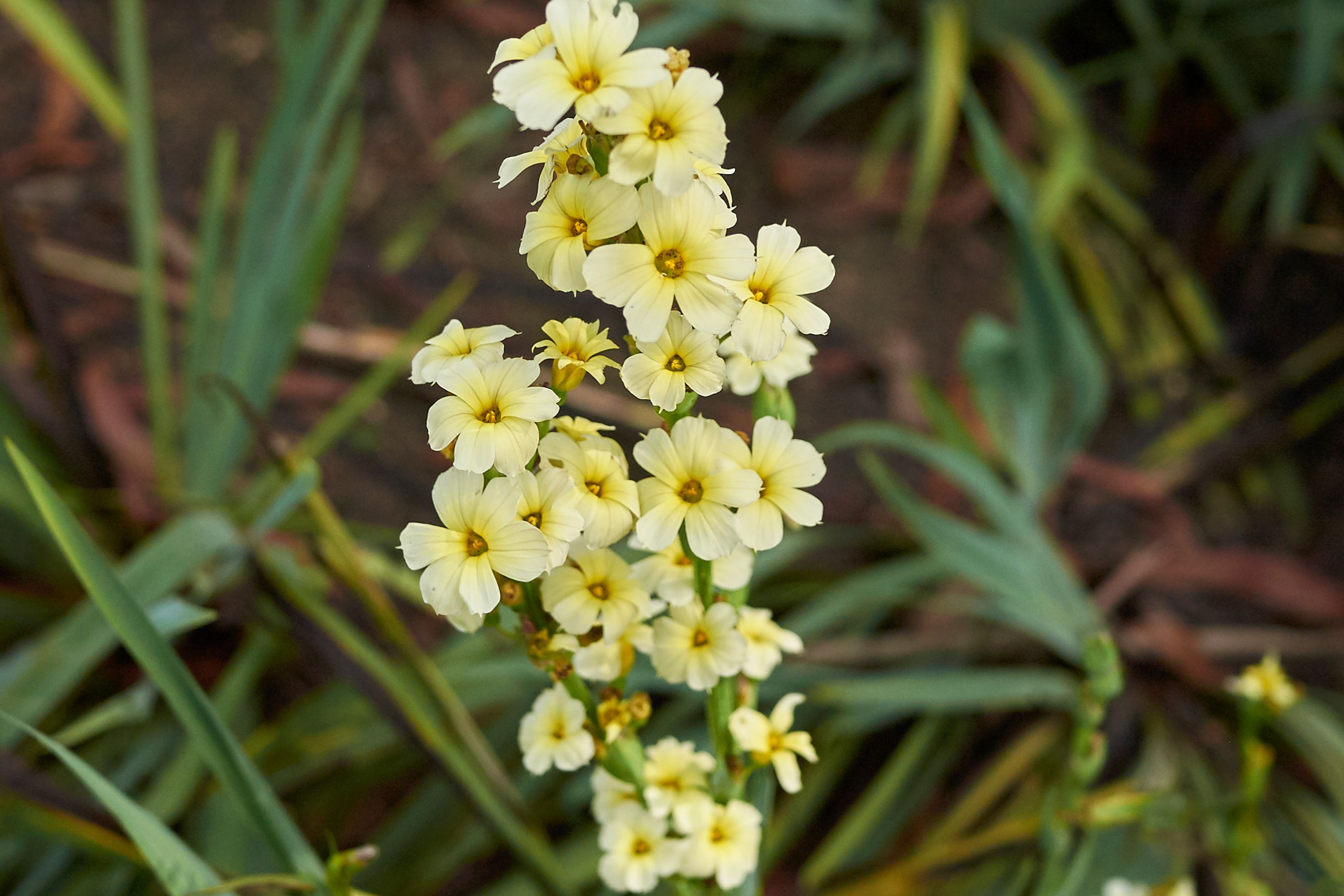Pale yellow eyed grass
(Sisyrinchium striatum)

Description
Sisyrinchium striatum is a small, herbaceous plant species that belongs to the family Iridaceae. It is commonly known as pale yellow-eyed grass or yellow-eyed grass due to its yellow flowers and grass-like leaves. S. striatum is native to North America and can be found growing in various habitats, including prairies, meadows, and open woods. In this article, we will explore the characteristics, cultivation, and uses of S. striatum in detail. Taxonomy and Nomenclature: The genus Sisyrinchium comprises of approximately 200 species and is mostly found in the Americas, with some species also present in Africa and Eurasia. The name "Sisyrinchium" comes from the Greek words "sys" meaning "pig" and "rhynchos" meaning "nose," which refers to the pig-like snouts of the seed pods. The species name "striatum" means "striped" in Latin, referring to the striped or ridged appearance of the flowers. Description: S. striatum is a small, clump-forming perennial plant that grows up to 60 cm (24 inches) tall. The leaves are linear, grass-like, and up to 30 cm (12 inches) long, with a bluish-green color. The stems are erect and slender, and the flowers are arranged in loose clusters at the top of the stem. Each flower has six yellow petals with brownish stripes and a yellow center. The flowers are about 2 cm (0.8 inches) in diameter and have a sweet fragrance. The fruit is a small, oval-shaped capsule that splits open when mature, releasing numerous small, brownish-black seeds. Cultivation: S. striatum is an easy-to-grow plant that prefers full sun to partial shade and well-drained soil. It is adaptable to a wide range of soil types, including clay, loam, and sand. It is drought tolerant but prefers regular watering during the growing season. S. striatum can be propagated by seed or division in the spring or fall. The seeds should be sown in a well-draining soil mix and kept moist until they germinate, which can take several weeks. Once the seedlings have developed several leaves, they can be transplanted into their permanent location. Mature plants can be divided every three to four years to maintain their vigor. Uses: S. striatum is primarily grown as an ornamental plant in gardens and landscapes due to its attractive flowers and foliage. It is also useful as a groundcover or border plant in rock gardens, wildflower meadows, and naturalized areas. The flowers of S. striatum are attractive to pollinators, such as bees and butterflies, making it a valuable plant for wildlife gardens. In some parts of the world, S. striatum has also been used in traditional medicine for the treatment of various ailments, including stomach disorders, headaches, and fever. In conclusion, Sisyrinchium striatum is a beautiful and versatile plant that can be easily grown in a wide range of garden settings. Its attractive flowers, drought tolerance, and adaptability make it an excellent choice for gardens and landscapes across North America. Additionally, its importance to pollinators and potential medicinal uses make it a valuable plant for conservation and sustainable land use practices.
Taxonomic tree:







